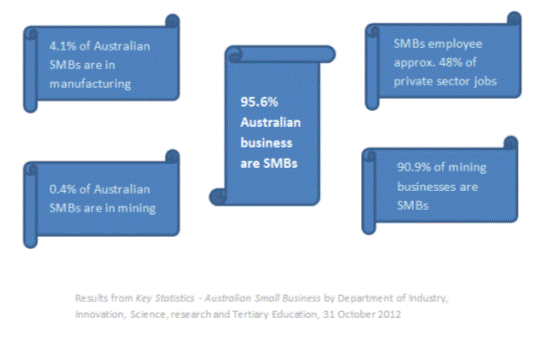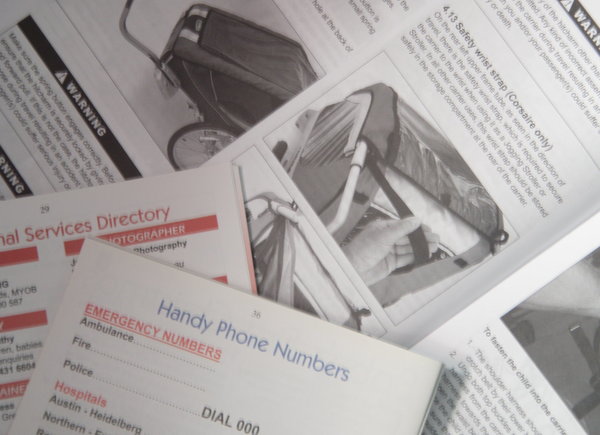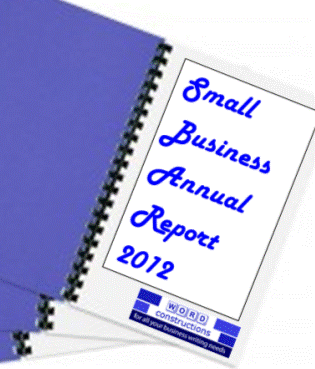I hope you find my writing and business tips and observations useful. My business and blog are dedicated to helping businesses communicate clearly and reach their potential.
Read, subscribe to my newsletter, enjoy!Tash
How to get your customers to speak up
Here’s an interesting fact: Customers are much more likely to contact you when they don’t like your product than when they do. “Praise” emails are not that common nowadays.
And this has nothing to do with your product being of not such good quality. It’s just the way humans are set up. When we enjoy something, most of the time we like to enjoy it in silence. But when we don’t enjoy something, we want everyone to know.
So how to encourage your customers to speak up, and not only when they have a problem? Here are 5 tips you can use today.
1. Templates for testimonials
Testimonials are great for generating some proof that your products or services work, and that people enjoy using them.
However, most customers will find it hard to write a testimonial on their own. It always requires a while, and everyone wants their testimonial to sound smart, so they need to find a couple of minutes to craft a proper one.
You can make it a lot easier by creating a template and sending it to your customers. Start by writing your own testimonial, and then remove all the facts from it, leaving just the surrounding words, so everyone can fill it with whatever they want to say.
2. Feedback apps
These are quite popular these days. Some sites have chosen to display a small icon on the left or right-hand side of their sites (see image – User Voice). The icon usually says something like “Send us your opinion,” or “Suggest a ______,” or whatever else feels suitable for the site.
This is run by an external app so you – the website owner – don’t have to focus on managing all the suggestions, you can simply use the provided interface and be done with it in no time.
3. Feedback section on your forum
If you have a forum that goes along with your site, consider creating a feedback section there.
Create some main threads asking some questions that seem the most important to you. Like for example: “What do you enjoy the most about our products?” Of course, I’m sure you can come up with something more creative.
People are really used to forums online, and they understand the way they work. That’s why your customers are very likely to take part in any discussion you start.
4. Email support reminders
Support via email is one of the most common ways of handling customer support. So here’s an idea. Whenever you solve a support ticket send another email asking your customer about their experience. Make the questions concrete, preferably in a form of a survey, so they can easily (and quickly) respond.
Plus, if you also include an open question, you might just be able to receive some great testimonials that way.
5. Incentives
Here’s the main question: Why would anyone even want to contact you? When customers don’t like something about your product they are contacting you to get the thing fixed. But when it’s already working, then there’s really no reason…
This is why you should consider offering some form of an incentive just for submitting some feedback (not just for positive feedback).
Things that work great are bonuses, discount codes, extra features for no charge, some additional content … it all depends on the kind of product or service you’re offering.
No matter which of these ideas you end up implementing you should remember that customer feedback is essential to every business’s development. How else would you be able to provide your customers with exactly what they want if you never asked?
Guest blogger details: Karol K. is a writer, and online businessman. You can connect with him at ThemeFuse.com where he publishes weekly articles – also a great place to go for top-notch WordPress themes.
Using common ground for communicating
 Last night we had two South African cubs talk to our Australian cub pack. They showed us their uniforms and gave us an insight into how cubs is different in South Africa.
Last night we had two South African cubs talk to our Australian cub pack. They showed us their uniforms and gave us an insight into how cubs is different in South Africa.
At first glance, their uniform is very different to ours and not everyone would automatically link them both as cub uniforms, nor recognise all the badges. And it quickly became obvious that the Australian and South African opening ceremonies are different, too.
Yet when we spoke and we asked these cubs questions, our common language made it easy to understand each other and relate the differences.
It was also very nice to invest a new cub, explain that the world scout badge is worn by all scouts around the world and be able to point out that exact badge on two non-Australian uniforms to prove the point and link all the cubs.
Knowing the same foundations
Cubs and scouts are all based on the same principles wherever they are in the world, and each country adds its local flavour.
Yet all cubs know Akela is the leader of the pack, start the night with a Grand Howl and earn both interest and ‘progressive’ badges.
That common foundation made it easy for 8 to 10 year olds to understand each other.
A common understanding also helps business people communicate effectively.
It’s important to use the same language (jargon) when talking to suppliers and clients – do they know what a bleed or a keyword is? what do they mean by the word ‘benefit’ or ‘pension’? when will they deliver something promised ‘soon’ or ‘fast’?
Building a report, even if it is based on non-business connections, can also help business communications. Have you found it easier to work with someone who follows the same sport as you, grew up in the same area or likes the same music as you? This is one of the purposes of small talk when you start a business meeting or relationship.
Do you note and look for common ground with your business contacts? Do you remember those links so you can revisit them later?
Cub differences
For those who are curious, here are some of the differences between Aussie and South African cubs as discovered last night.
 South African cubs work towards progressive badges (gaining one about every 12 months) called the caracal, cheetah, leopard and lion badges. These badges are round and worn on the front of their shirt.
South African cubs work towards progressive badges (gaining one about every 12 months) called the caracal, cheetah, leopard and lion badges. These badges are round and worn on the front of their shirt.
Australian cubs work for their boomerangs (gaining one about every 12 months) called bronze, silver and gold. The badges are diamond-shaped and worn on the sleeve – put together with another badge they themselves form a diamond.
The highest South African cub badge is the Leaping Wolf; Australian cubs can earn the Grey Wolf.
South African Scouting consists of cubs (7 – 10), scouts (11 – 17 ) and rovers (18 – 30). Aussie scouts are Joeys (6 – 7), cubs (8 – 11), scouts (11 – 15), venturers (15 – 18) and rovers (18 – 26).
Both countries have interest badges for cubs to earn. South Africans earn red badges and Australians earn a green level 1 or red level 2 badge – all are worn on the sleeve.
Cubs in both countries are divided into sixes, each named by a colour. The cub looking after their six is called a sixer. An Australian sixer wears a badge saying ‘sixer’; a South African sixer has two yellow stripes on his or her pocket.
In Grand Howl, all cubs respond to the call of ‘pack, pack, pack’ and run into a circle. The differences are who calls out ‘cubs do your best’ and how the cubs form their parade circle.
South Africa apparently has 11 official languages, compared to Australia’s one, so that would make for an interesting discussion on communication, too!
Are annual reports just for big business?
What do you think of when you hear about an annual report?
If you’re like most people, you think of thick, boring document produced by big business each year, sent out to shareholders who never read them. And there is a certain amount of truth to that, too.
Annual report rules
If you’re new to business, you may suddenly wonder about annual reports – and if there are any rules meaning you have to produce one, too.
The good news for SMBs is that annual reports are not mandatory for every business. However, once you register as a company you may have to produce annual financial reports (which is usually presented as an annual report).
You may also need to produce some sort of annual report if it is stated in your constitution, deed, financial agreement or other controlling document.
Generally speaking, the rules apply to the financial information you must include; the remaining information is an account of the business for the prior 12 months and is often determined by the company itself or the associated industry standards.
Creating an annual report
So if you don’t have to prepare an annual report, can you?
Yes, any business can prepare an annual report – and add whatever you like to it if you are doing it voluntarily!
A good annual report is a mix of general information, financial information and marketing. It is used by people to decide if they want to invest with the business – whether that means a direct investment as a shareholder or as a client – or even be associated with the business (such as an employee adviser or supplier).
Having an annual report certainly adds an air of professionalism and credibility to any business, and you can limit the financial information if you wanted.
On the other hand, it can be time-consuming and expensive to produce an annual report so it’s not something to be taken lightly.
For a business that doesn’t have to produce an annual report, do you think there is much value in doing so? Would you consider creating one for your business?
Check your edit notes are gone
Have you ever added notes for a designer or typist? Are you sure they were removed later?
It’s an easy and obvious thing to do – add a note directly where it is relevant so someone else can make appropriate adjustments. I do it a lot, especially in pdfs that I send back to a designer for changes.
Make sure they’re removed
Today, I came across this image on Facebook:
It amused me because someone has asked the designer to add extra information – and the designer has added ‘please add’ as well as the required information. And no one noticed it to have it removed before publishing the banner.
At least it was a polite request that was overlooked!
Being a polite request, this has amused me and in no way detracts from me being a Cadbury customer (given I love their chocolate it would take a lot!) But it does have the potential to damage a reputation.
How do you feel about Cadbury making such an error?
I remember a similar experience in a training manual I once read. In amongst general text was a paragraph to the effect of “Chrissie the following graphic needs to add a break between a and b plus include x, use lower case letters and correct the categories”.
It is funny to tell but it isn’t a professional look for the training organisation!
Testing the reading
Some years ago, I worked in an engineering company and wrote many Expressions of Interest (EoI). I generally took an old EoI and hand edited it, adding and subtracting text as well as moving things around.
The department secretary took my rough notes (and they were rough at times!) and typed up beautiful documents.
Just for fun, I would occasionally test her and write something like “The company has three experienced engineers and the cow jumped over the moon, The little dog laughed to understand this project’s timing.”
It’s just as well I did proof read those documents as the secretary faithfully typed up the cow jumping over the moon!
Can you tell I’m not a talented typist? There’s no way I could type pages of information without actually ‘reading’ and processing it!
Other examples?
Have you spotted live examples of editor comments that have been included rather than followed?
Choosing an annual report cover image
As important as the content is, the cover of an annual report also needs time and consideration to ensure the report conveys the desired message.
Let’s face it – people see the cover before they read any content so it has the power to set the tone for how people approach reading the report.
A good cover will also attract attention, meet the company brand and complement other company materials.
Choosing an effective cover image and design
Although I let designers be creative with annual report covers, there are factors I consider in preparing a design brief and in choosing the final look.
Some questions I try answering are:
- what did last year’s report look like, and how similar should this year’s be?
- what central messages have been used during the year? For example, if a theme was used in a lot of marketing I will work that into the cover as well to reflect the year being reported on and maintaining consistency
- what are the core elements of the company brand? Can I work them into the cover through design and/or choice of images?
- are the images unique to this company? It’s a terrible feeling to prepare a lovely cover just to see the same image on a competitor website a week later…
- does the cover look fresh and different? A plain white cover with a logo is simple but can be boring and doesn’t stand out
- is the image working with or against the brand? For example, a smiling person can look professional or kitsch so the specific photo is just as important as the concept being used
- is there anything in the image that could offend or mislead? Many people have been caught out by some little detail in the background of an image – never assume no one will notice!
- could we adjust the image to better suit the brand or cover? Looks at things such as swapping which way people are facing or adjusting colours of people’s clothes
- will one image overpower or give the right message? Will multiple images be distracting and busy, or give a broader overview?
- if using a tagline on the cover, does it work with the image and design? Change the less important aspect if they aren’t working together
Using images
Being such a prominent position, it is crucial to ensure you have the appropriate rights to use any image on the cover of an annual report. If someone else provides the image for you, check the rights yourself as mistakes will be costly.
If you don’t own the copyright of the image(s), check carefully that usage rules allow you to put the image on the cover and make any changes you want to – don’t assume that royalty free images can all be used in the same way.
Have you ever chosen the image for an annual report cover? How did you choose which one was the best fit?
Do you think SMBs need better management?
I think small businesses (overall) are productive and working hard. Do you agree?
Economist with Treasury, David Gruen, is quoted as stating otherwise yesterday – and this has angered a lot of SMBs.
Amongst other things, he said that “family-run businesses tend to exhibit inferior management performance” and that having many small business in manufacturing impacts on Australia’s productivity because multi-nationals “tend to implement strong management practices”.
Business size and management
Note he is actually discussing results of a report showing that Australian managers ranked lower than those in many other nations, especially in people management. And that this same report showed lower managements standards in smaller companies – although only medium and large companies were studied, not small or micro businesses.
I would like a comparison done that includes small and micro businesses as well – maybe we buck the trend and are managed better than medium businesses?
Better management leads to more productivity and innovation, so management is important.

I like this quote from Gruen:
A healthy economy allows experimentation by small start-ups with bright ideas, which may tend to have low productivity on average but which are likely to either exit, or improve and grow rapidly over time. It sees labour move over time towards higher productivity firms as they gain market share and away from lower productivity firms.
So Gruen was quoting from a report. If we assume the report was conducted well and reported accurately, there seems to be evidence of better management in bigger companies.
From your own experience, would you agree with that? Does your answer change if you ignore businesses with under 100 employees?
Maybe we can improve SMB management?
Instead of assuming Gruen is anti-SMBs, perhaps we can look at how we manage our SMBs and learn from the multi-nationals.
Take a constructive approach to improve our businesses, even if we don’t think the big guys have it right.
The main areas I can think of for improving SMB management are:
- having more written procedures to ensure consistency and efficiency
- outsourcing tasks to give back time for better management – or maybe go the whole way and outsource some management as well!
- making time to learn more – whether by reading more widely or attending seminars or doing actual courses. And keeping to that committment
In his speech, Gruen gave another partial answer:
The level of education and skills of both managers and non-managers is positively correlated with management performance.
Unfortunately I can’t find any figures to show how educated SMB and big business managers are. It makes a certain amount of sense that further education increases your skills, but there are of course exceptions of fantastic managers and business owners with very little education.
And it’s a bit hard to make SMBs get more educated when they’re in the middle of running a business or two!
So what is good management?
How can we as SMBs improve our management?
What management practices do big business use that we can learn from?
By the way, you can read the entire speech transcript from David Gruen. I have no personal opinion of him other than this speech but am glad I looked it up rather than just relying on the second-hand report I first read. Anybody can sound bad with words taken out of context.
Outsourcing gives control, rather than takes it
Outsourcing means getting someone else to do a task (or tasks) for you so you can spend time doing other things; as a sole trader it is pretty much mandatory to outsource to succeed.
Sounds like a strong statement?
It is a strong statement but that doesn’t stop it from being true.
Small business people have a lot to do
There are many tasks that need to be done to keep any business running – accounts, invoicing, customer service, marketing of some sort and general admin are the minimum. Then there’s the specific work of that business plus managing a website and additional marketing.
And the list keeps growing. With the introduction of blogs then social media (and more and more platforms), businesses have more tasks to add to the daily to do list than ever before. Even if you aren’t doing much on social media, you should be aware of it so you are deciding to not use it (rather than just ignoring it) and monitoring it is a good idea, too.
When there’s only you, there is a big pressure to stay on top of everything and be in control. Let’s face it, there is no one else to pick up any slack, is there?
Handing over tasks

A conductor controls an orchestra without being the orchestra – outsourcing makes you the conductor of your business
Earlier this year, Jane Shelton blogged ‘You can maintain your sense of control by outsourcing many of the routine elements of your business.’ Outsourcing does not have to mean giving up control of your ‘baby’.
Think of tasks left undone or ideas not followed up on because there is no time.
Think of those tasks done in a rush rather than with care and attention because the to do list is so long.
Think of the last time you planned your week’s activities rather than swayed from one urgent activity to the next and hoped for a moment of breathing space.
Still think outsourcing takes away control?
Outsourcing simply means choosing which things to get someone else to do – either to save you from boredom, save you time or to gain expertise and skills you just don’t have.
For example, I outsource my filing (to my daughter!) which I find boring, my bookkeeping to gain back time and any design work as I don’t have those skills. So I can focus on writing for clients, advising clients and caring for my business.
Choose who you outsource to and you still control the outcomes. If you want, outsource most of a task and finish it off yourself if that feels better – but I bet you’ll soon give the entire task away!
What do you do?
List all the tasks you do for your business. Yes, all of them.
Long list?
Categorise them (the list Jane gives in the afore-mentioned blog post is a good system).
Now, sit back and imagine your business life if you had an extra two hours a week…
How would you spend another four hours a week in your business? How much would your profits grow by?
Want to keep that dream and feeling alive? Outsource something – just some little task so it doesn’t feel like you’re handing over your baby. Maybe get your account data entry done, ask for a blog post to be written or have your office cleaned by someone else.
Then you just have to keep on taking baby steps until you have outsourced enough to regain control of your business.
So the only question left is what will you outsource first?
I assure you of the meaning
Today’s Monday Meanings is an interesting set of words.
All three words have a similar sound and very similar meanings – they all relate to making certain and secure. However, they are generally used in different contexts.
Assure: speak positively to convince, make certain, make safe, ensure
The police will assure the family that all is being done.
The CEO will assure this job is yours once she returns from lunch.
Ensure: make certain, make safe, secure
Preparing a first aid kit will ensure a safer trip.
Insure: to guarantee or provide indemnity against harm or loss, usually in the form of money
I pay a premium so the company will insure my business against theft and fire.
So which word to use when?
insure is used where financial matters are involved – relate insure and insurance basically.
assure is mostly used on connection with people or other living things (a for assure and a for alive can help remember this one!) – ‘I assure you’ – and can be related to reassure
ensure is more about events and things – think of ensure as a guarantee that something will happen
Have a go yourself…
Here are some examples for you to try the three words in…
Mary wants to ……. her business equipment.
Jane will …….. the blog posts are uploaded on time.
Ashton hastened to …….. staff that their jobs were secure.
The leader carried an extra blanket to …… the cubs were warm.
Comedy writers ……… readers of a laugh.
Not all companies will …….. a sole trader business.
* Image courtesy of 123rf





Recent Comments